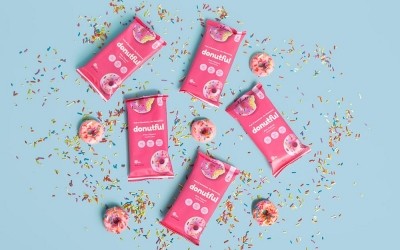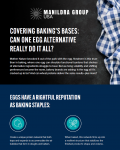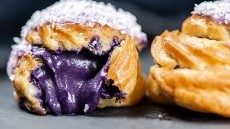Chocolate remains king in sweet baked goods category, as better-for-you sees growth

“Consumers are pivoting to what I would call a more conscious decision-based choice model than following restrictions or diets, but really thinking about the world around them themselves, the environment, their community, and how the food choices that they're making all fit into that puzzle,” Hickey said. “We see the majority of consumers saying they're generally not following a specific diet. They're making their own rules; they're taking advice from other places. They feel like they're making healthy choices, but they're not following something that is strictly rules and restrictions.”
Chocolate remains king, as global flavors grow
Consumers are turning to sweet baked goods for a variety of reasons — from celebrating a special occasion to a mental health moment — which is spurring increased demand for classic flavors like chocolate, Hickey said.
“I have always said I don't think it's humanly possible for people to love chocolate more than they do already. I am proven wrong over and over again, with the growth of things like chocolate and chocolate chip, and other forms of chocolate that continue to grow no matter how big it is from a size perspective compared to other food items.”
When it comes to dessert flavors with the top menu penetration, chocolate is first with 71.2%, and chocolate chip was third with 28.2%, and they saw four-year growth of 2% and 12%, respectively, according to Datassential MenuTrends data published in September 2022. However, cinnamon saw a four-year growth rate of 5%, and sugar saw the highest with 17%, though these flavors only had a 22.7% and 22.1% menu penetration rate, respectively.
Consumers are also looking for more global flavors in baked goods, Hickey explained. About 59% of the 3,000 global consumers surveyed tried and liked Western European Sweet Baked goods, 52.9% for Latin American, 46.9% for Asian, 40.8% for Eastern European, 21.2% for African, according to Dawn's Global Bakery Trends Study report.
“We've seen throughout different cultural examples that everyone has their own version of fried dough. We have beignets and churros and mochi donuts; all of these remind consumers of a similar profile to that classic yeast-raised donut but in a new and exciting way.”
Better-for-you, sustainability come into focus for sweet baked goods consumers
Though consumers are still looking for sweet baked goods, they are also want better-for-you options with a variety of claims or as a smaller, more permissible indulgence, Hickey said.
“They're taking their own personal information, and again, making some conscious decisions and how that's all brought together, best for them and their own personal wellbeing. And because of that, we see a ... rise in a ton of different types of wellness claims.”
As seen in other categories, the clean label trend remains a key one for the sweet baked goods market. When it came to defining better for you, 67% of consumers said clean-label ingredients and more calories were healthier than processed ingredients and fewer calories, according to Dawn's Global Bakery Trends Study.
In terms of specific health-related and sustainable dessert terms, gluten-free has a 9.6% menu penetration rate and saw 58% growth over a four-year period, followed by vegan at 4.6% menu penetration and a 124% growth rate, and vegetarian with a 3.5% menu penetration and 158% growth rate, according to Datassential MenuTrends. The bottom of the list was non-GMO at 0.4% menu penetration and a 199% four-year growth rate, sustainable at 0.3% menu penetration and 111% four-year growth rate, and plant-based with 0.3%.
Another way consumers are looking for a better-for-you option is through smaller sweet options, as 86% of consumers say small indulgent sweet baked goods are a good way to treat yourself, according to Dawn's survey. Overall, mini claims have gained a 13.1% menu penetration with mini cookies (22.1% menu penetration per the mini category), brownies (21.6%), cannoli (13.2%), and pastries (9.8%) being the top four desserts.
“We've seen the decline of the dessert after dinner for a long time now. But really snacking in a form that's ... not just in a quick sweet or a candy bar but a true indulgent moment that consumers are embracing and feeling good about is really growing in this area.”





















